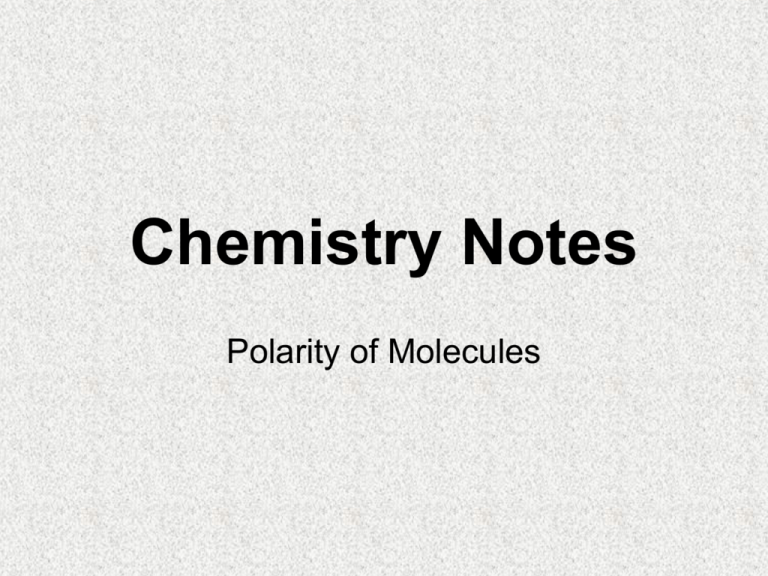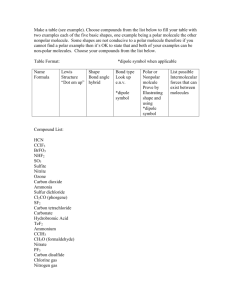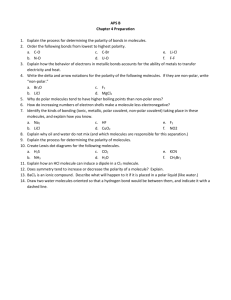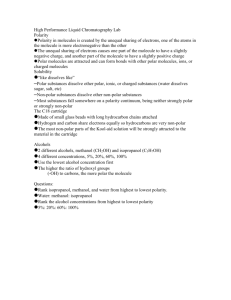Chemistry Notes - Bridgman Public Schools
advertisement

Chemistry Notes Polarity of Molecules Polarity What creates polarity in a molecule? • Migration of bond electrons – Recall we determine the direction of this movement with electronegativity • Bond e- move toward the atom with a higher electonegativity Dipole Moments: a quantitative measure of polarity of a bond Polarity Consider the Lewis structure for hydrofluoric acid: HF • Fluorine is more electronegative than hydrogen • Electrons shift from H to F • The shift is symbolized by a cross arrow ( ) • The consequent charge is represented as – δ+ - Represents a partial positive charge – δ- - Represents a partial negative charge Polarity • Molecules that have partial charges are referred to as polar molecules. – Ionic compounds are also polar molecules • Molecules that do not have dipole moments are called non-polar molecules. – Remember dipole moments create the partial charge Polar Molecules Nonpolar Molecule Polarity Determining Polarity • If all bonds are nonpolar, the molecule is non-polar • If at least one bond is polar, the molecule is polar, UNLESS it is symmetrical, then it is non-polar Consider the molecule NH3 • N is more electro-negative than H • Electrons move closer to N • Unshared electrons on N also have a dipole moment (up) • NH3 has an overall polarity upwards Consider the molecule NF3 • N is less electronegative than F • Electrons move closer to F • Unshared electrons on N also have a dipole moment (up) • NF3 has an overall polarity downwards Polar v. Nonpolar Polar v. Nonpolar Summary Be able to… • Explain what creates polarity • Determine a dipole – Using the cross-arrow – Assign partial charges • Tell whether a molecule is polar or nonpolar





